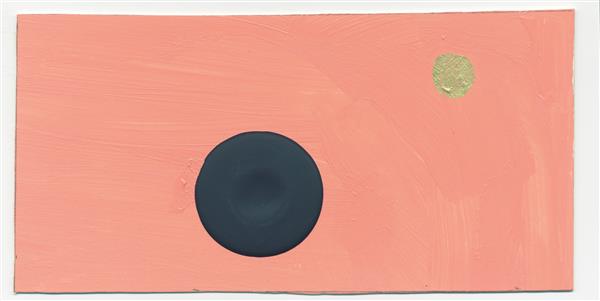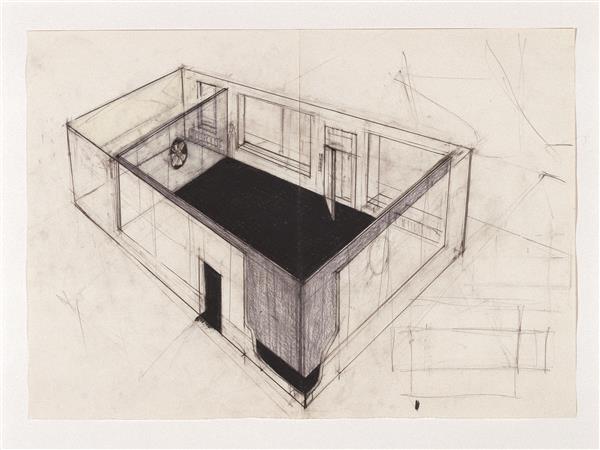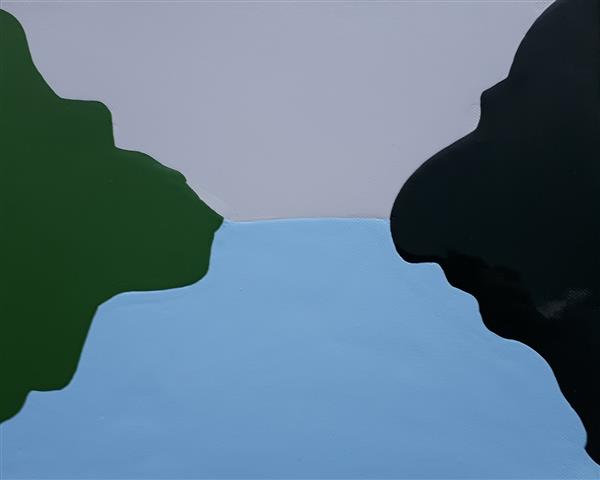Untitled (9 designs for EVN Season's card and 6 designs für EVN Season's paper 2012)
Oswald Oberhuber
mixed media on paper or cardboard
card: each 10 × 21 cm, paper: each 42 × 59 cm
2012
Acquisition 2012
Inv. No. 0245 a-o
As an annual initiative of the evn collection, the design of the EVN Group Christmas card is given to an artist. Oswald Oberhuber, who has written art history like almost no other Austrian artist, could be won for the task in 2012. In 1958, he proclaimed a manifest about the end of all styles, and called, at the same time, for the “permanence of change”. Since this time, Oberhuber, the authority on flexibility, has abducted his audience into the polyphony of avant-garde. The artist compiled with the request to make a design for the Christmas card in an unusually generous way. The 15 variations on the theme of painting read like a story.
The following conversation between Hans Ulrich Obrist and the Austrian artist Oswald Oberhuber (slightly redacted here) took place within the context of the exhibition series “Safety Curtain” by the museum in progress.* Since 1998, this series, which was initiated by Oberhuber himself, has been transforming the safety curtain of the Vienna State Opera in a temporary exhibition space for contemporary art.
Prompted by this series, a conversation with Hans Ulrich Obrist took place in August 2013 to discuss Oberhuberʼs influences and his multidisciplinary practice:
How did you come by art, how did art come to you?
It already started in primary school and since then it’s been clear for me. Actually it came by way of music. At home the only real inspiration was literature.
What were the first influences?
Barlach and Picasso. The Picassoʼs sculptures were decisive while the sculptural principle – the exaggeration of the figures – was very much Barlach, though later on I was to abandon it completely and propagate the sculpture which is no longer a mass, but flat.
You work with sculpture and in architecture, you draw and paint, you design posters, you are a curator and you write.
I took on postmodernism when the term hadn’t even been coined yet. It wasn’t only my opinion that modernism had been overcome and no longer existed but also that you could proceed in a completely different form, that anything was possible. A language which was much broader than this style related procedure.
This year’s curtain [2013/2014] is dedicated to our friend Josef Ortner for whom you were a mentor, as well as an inspiration for the founding of museum in progress. Could you say something about the invitation to the opera?
I am a fan of baroque music, the French composers in particular – Lully, Rameau, Charpentier and so on. They are my big favourites in music. So, that’s what I’m very much interested in, but also in modern music and I also like the other classics.
And what was on your mind when you were invited to design this yearʼs curtain?
The first thing that came to mind was the function, the fact that the concealment has a meaning: to hide from view the picture of someone who during the war imposed a ban on painting and went after artists in an immensely aggressive way.
Your work for the opera has something of a musical notation. Generally, your more recent work consists of extremely simplified abstractions.
These drafts are all a product of chance but with a clear focus on aesthetics. I place great value on beauty. A lot of people wonʼt see that. For me, itʼs the only aspect I learned from Willi Baumeister as a young student: that the abstract painting has to be beautiful if it is to be understood. I agree with him: The non-objective image becomes comprehensible through its beauty.
How can beauty be defined?
By the presence of total harmony even though that’s a matter of feeling which not everyone
possesses.
What’s your advice for young artists?
Not to tie themselves down but to try out everything. That has always been my principle.
* From: http://www.mip.at/attachments/432 (10/15/2015) and:
https://www.wiener-staatsoper.at/Content.Node/pressezentrum/Pressemappe_Oberhuber_de.pdf (10/15/2015)
Continue readingPublications
evn collection. 95–2015 Jubilee, Vienna 2015, p. 292–302
Oswald Oberhuber, Untitled (greeting card and wrapping paper), Maria Enzersdorf 2012
Oswald Oberhuber, Maria Enzersdorf 2012


